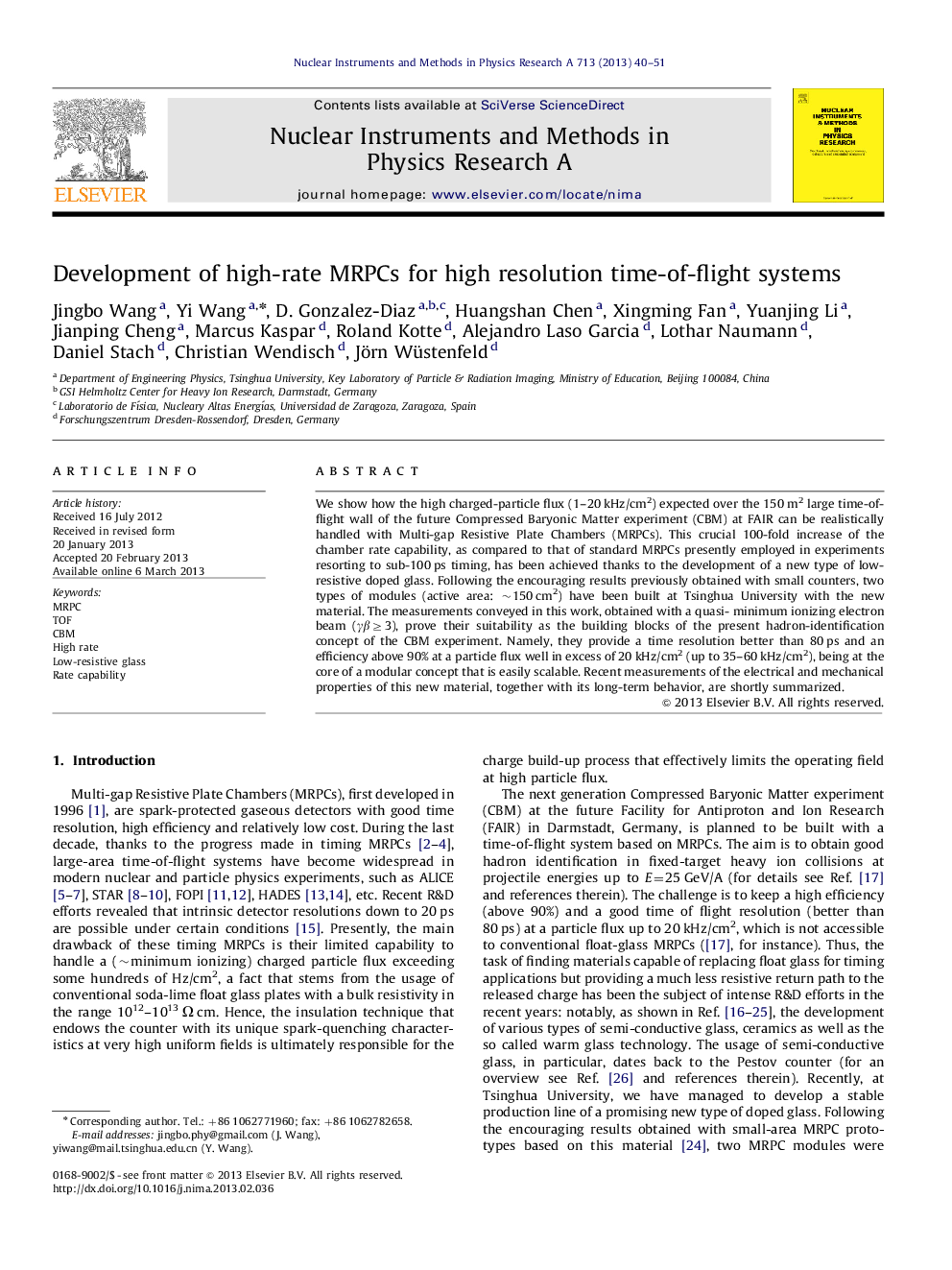| Article ID | Journal | Published Year | Pages | File Type |
|---|---|---|---|---|
| 1823131 | Nuclear Instruments and Methods in Physics Research Section A: Accelerators, Spectrometers, Detectors and Associated Equipment | 2013 | 12 Pages |
We show how the high charged-particle flux (1–20 kHz/cm2) expected over the 150 m2 large time-of-flight wall of the future Compressed Baryonic Matter experiment (CBM) at FAIR can be realistically handled with Multi-gap Resistive Plate Chambers (MRPCs). This crucial 100-fold increase of the chamber rate capability, as compared to that of standard MRPCs presently employed in experiments resorting to sub-100 ps timing, has been achieved thanks to the development of a new type of low-resistive doped glass. Following the encouraging results previously obtained with small counters, two types of modules (active area: ∼150 cm2) have been built at Tsinghua University with the new material. The measurements conveyed in this work, obtained with a quasi- minimum ionizing electron beam (γβ≥3), prove their suitability as the building blocks of the present hadron-identification concept of the CBM experiment. Namely, they provide a time resolution better than 80 ps and an efficiency above 90% at a particle flux well in excess of 20 kHz/cm2 (up to 35–60 kHz/cm2), being at the core of a modular concept that is easily scalable. Recent measurements of the electrical and mechanical properties of this new material, together with its long-term behavior, are shortly summarized.
